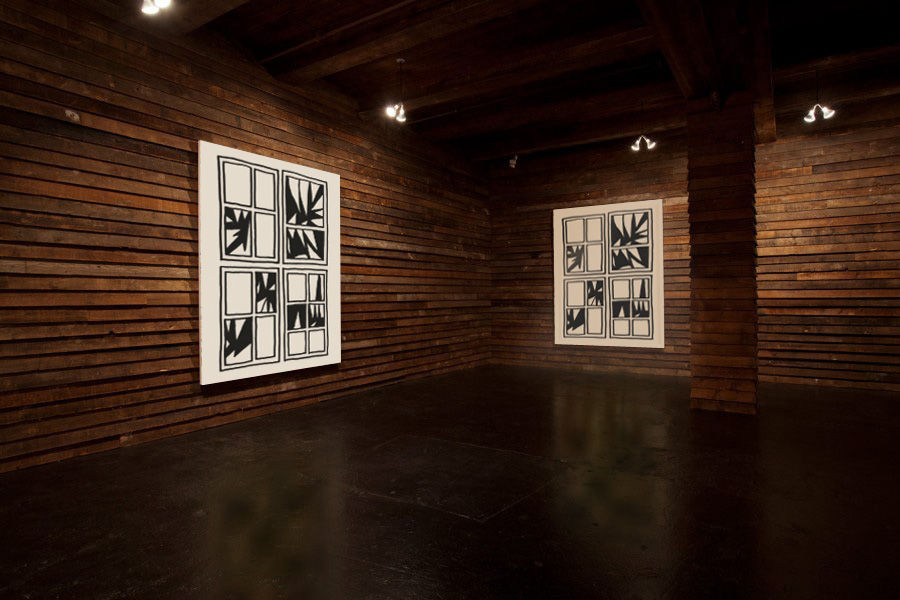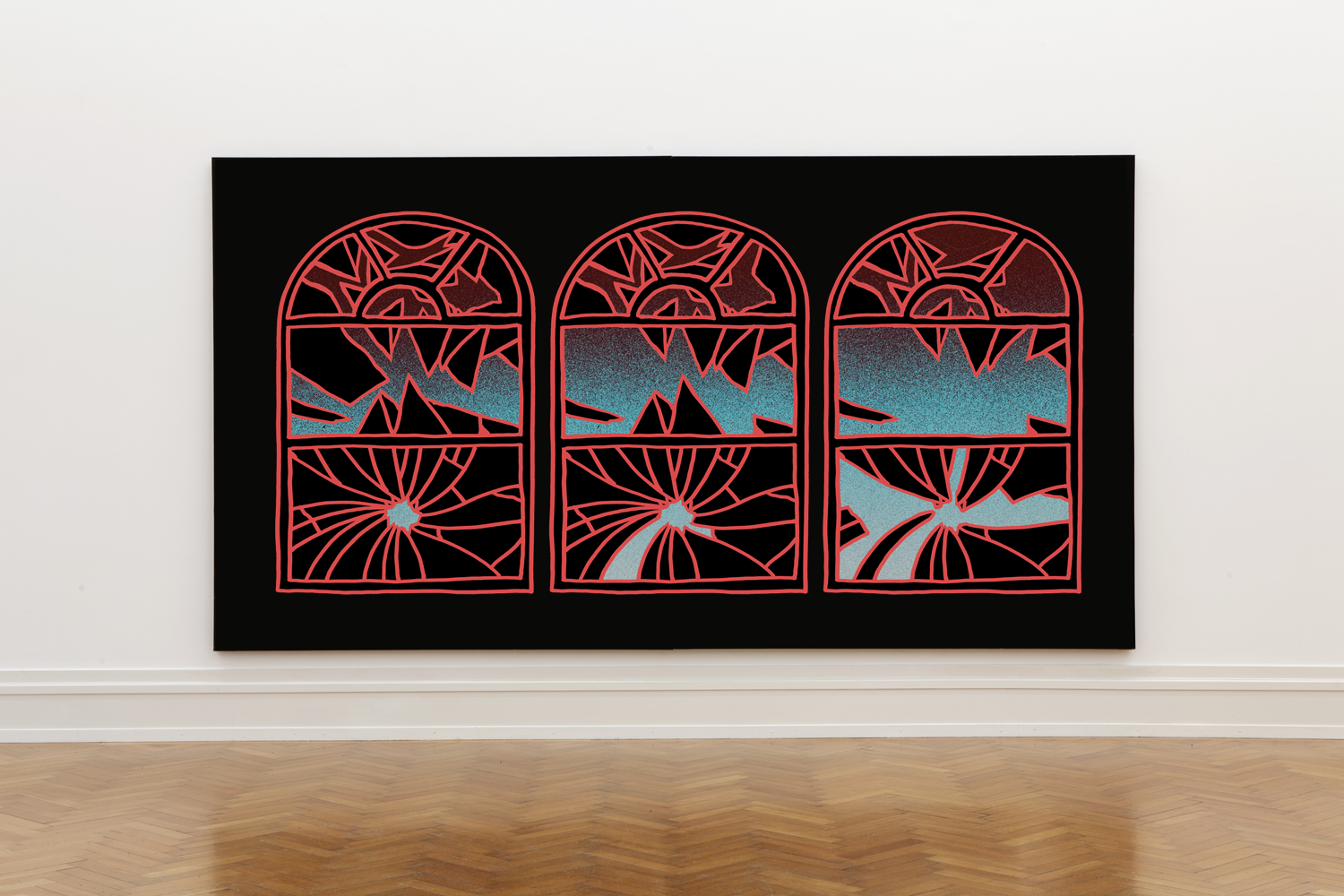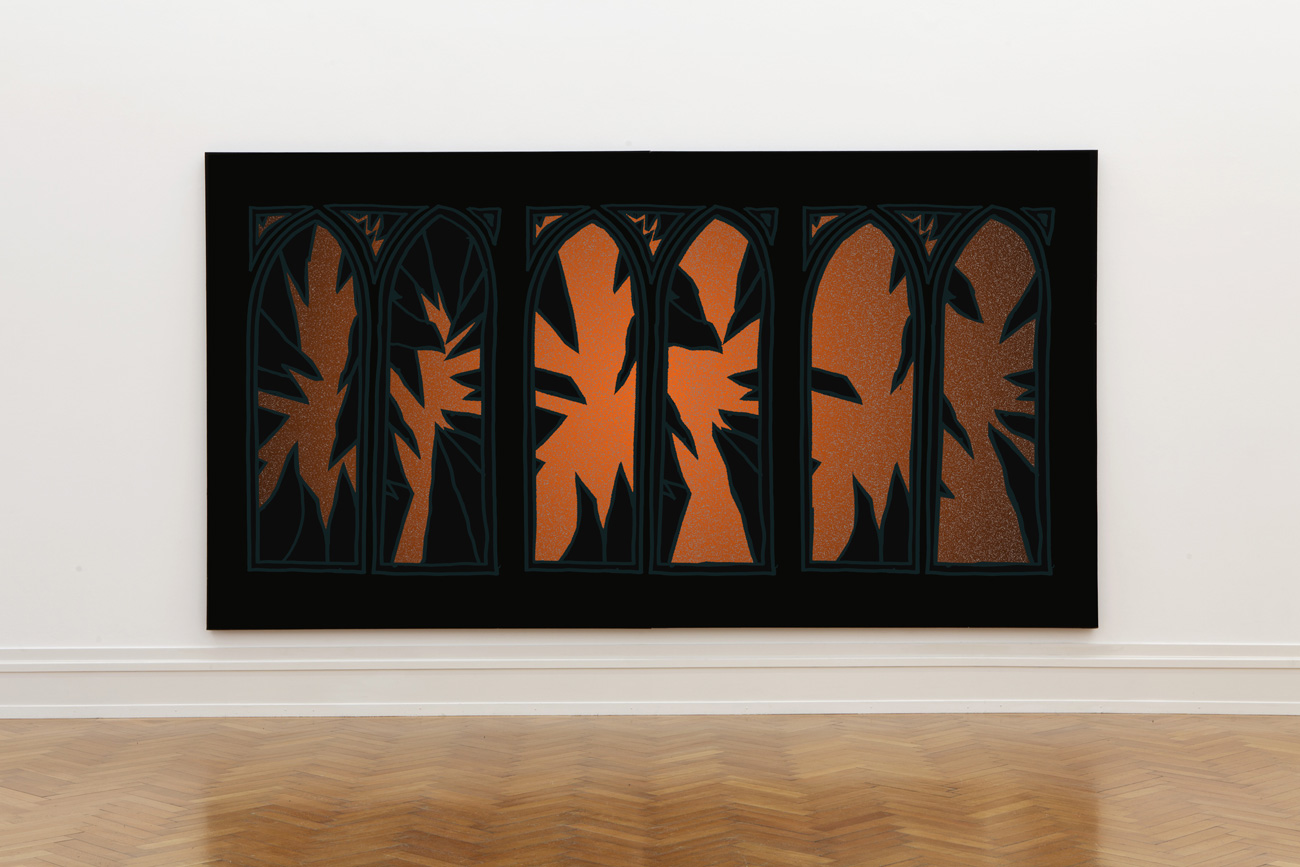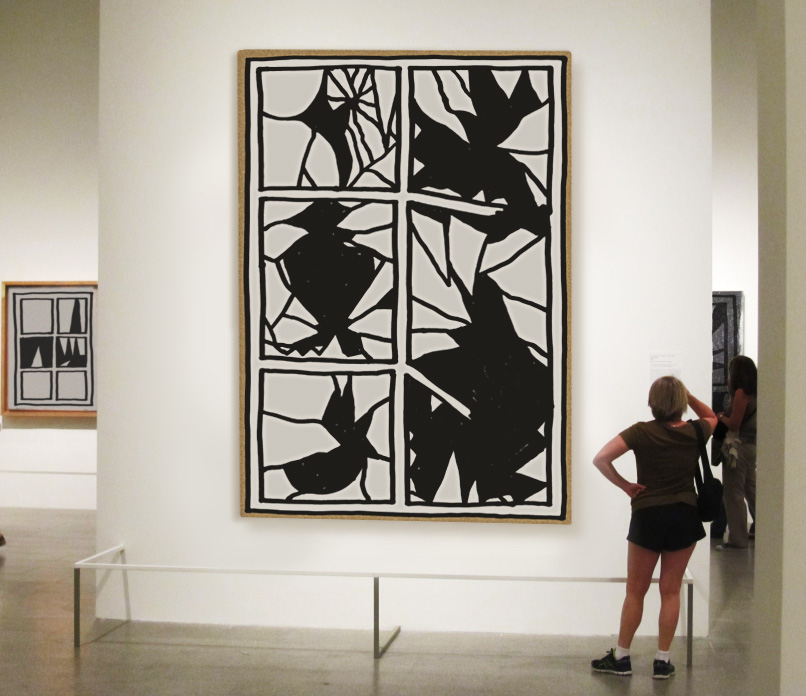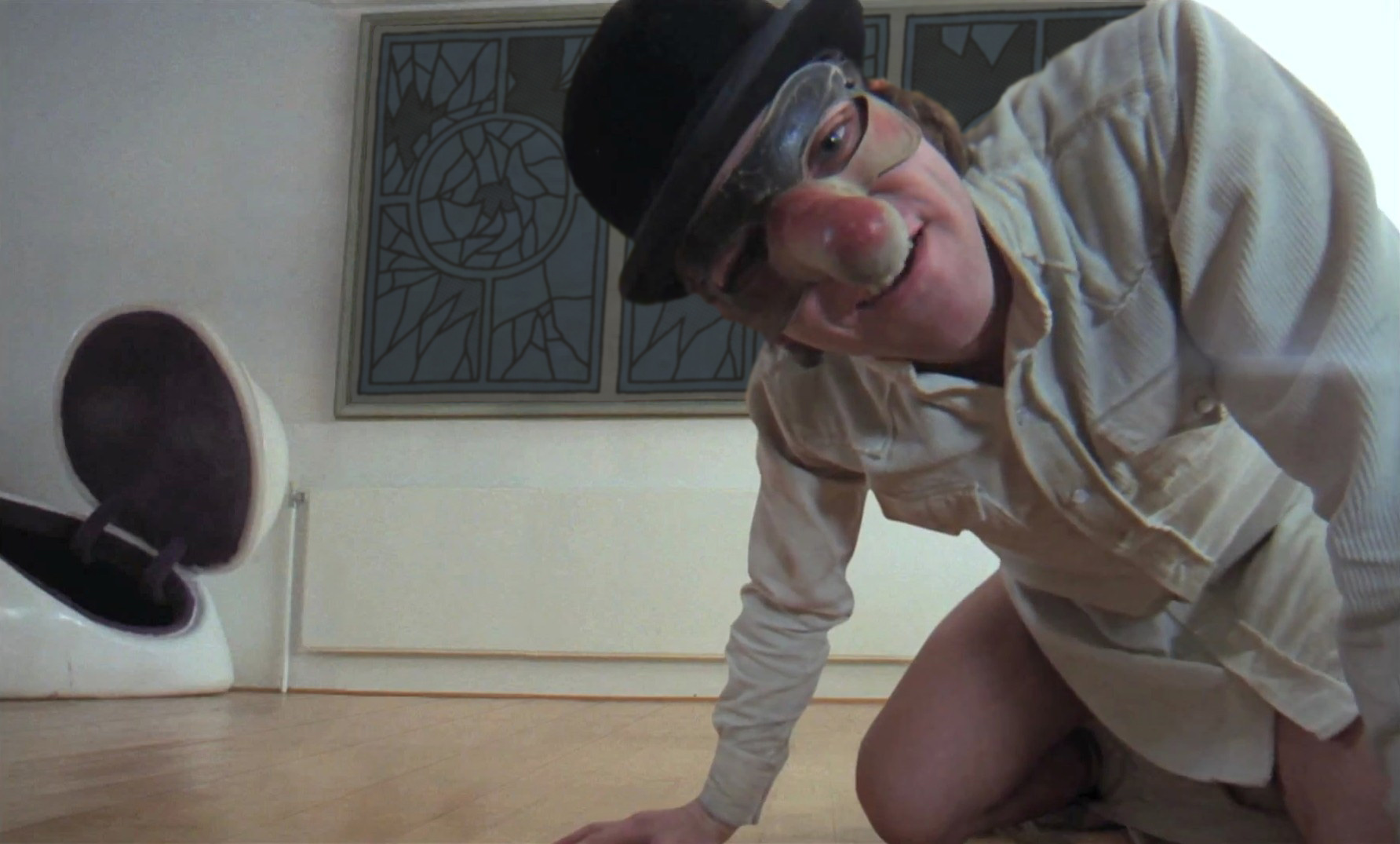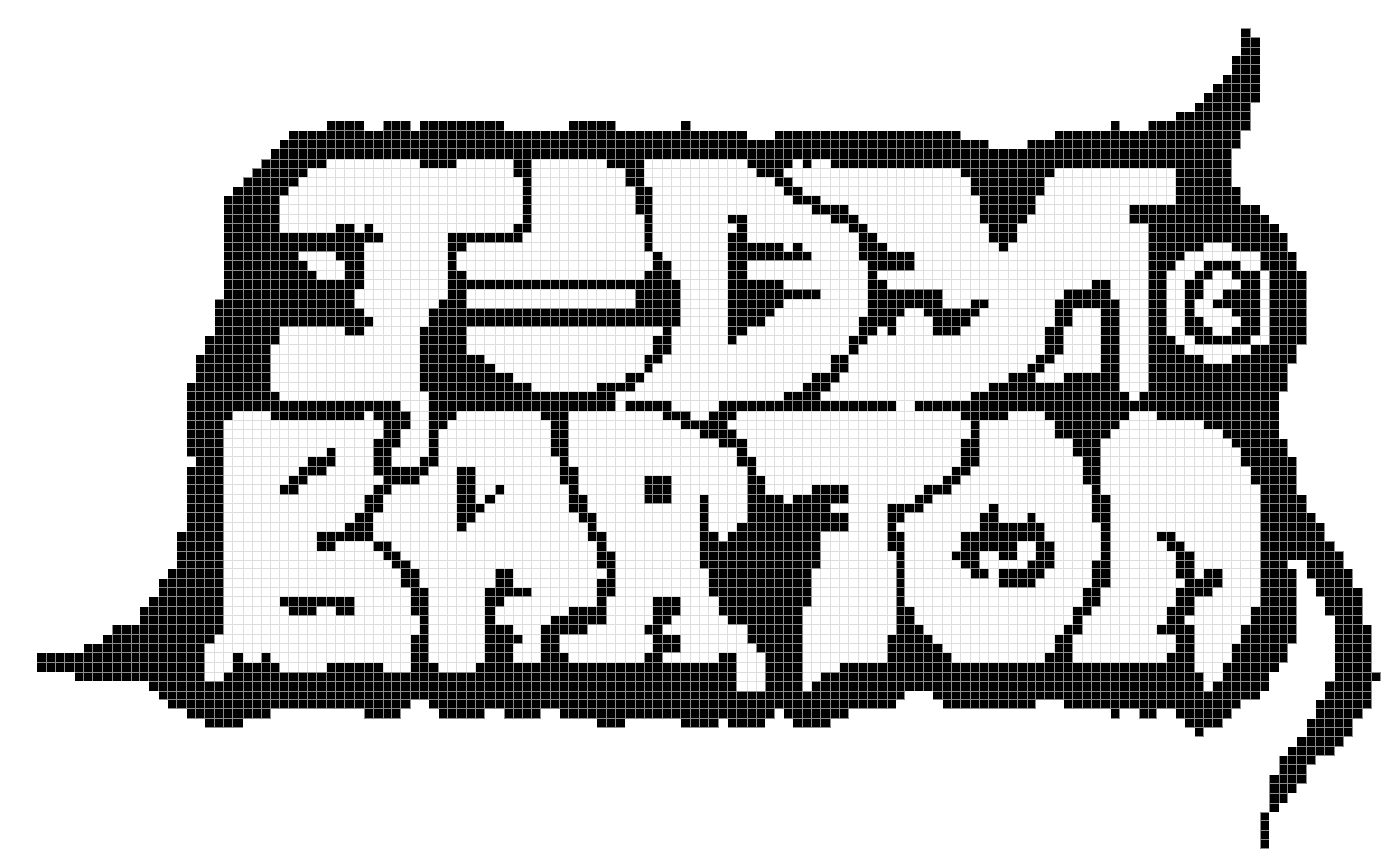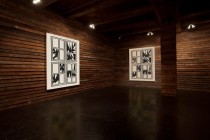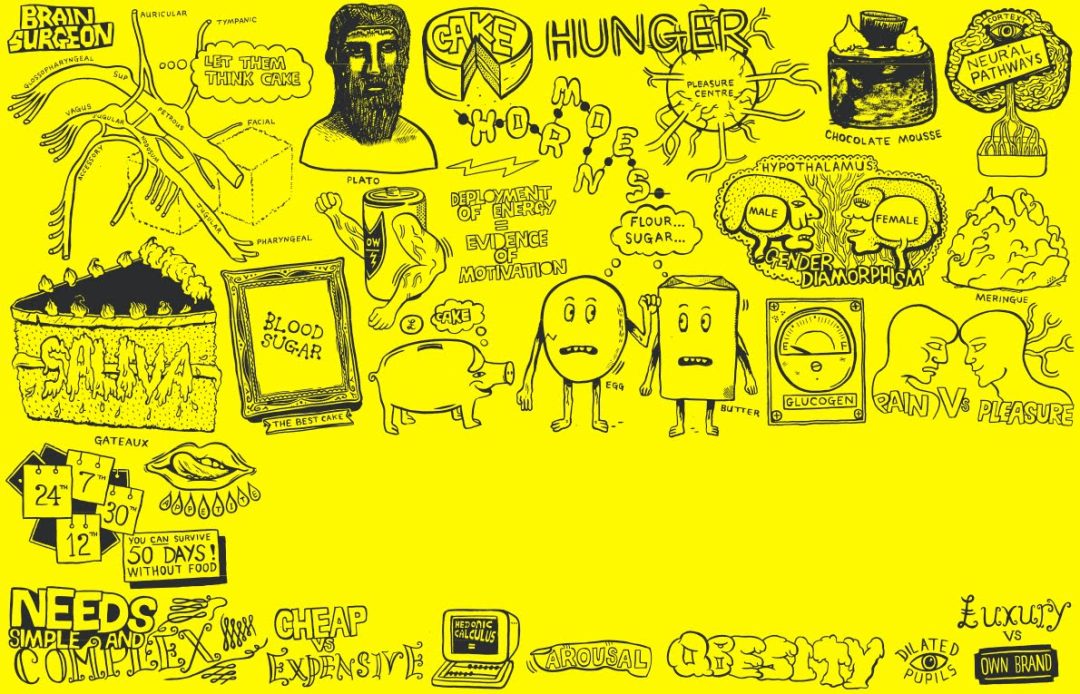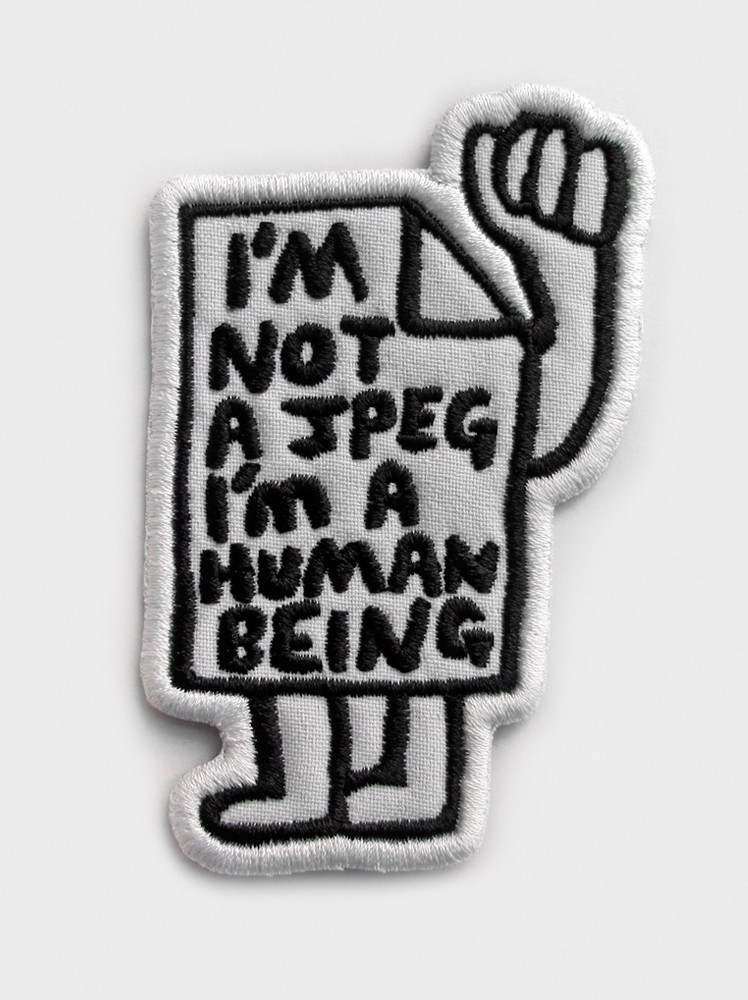I’m working on a series of images at the moment exploring the visual metaphor of the broken window. In 1850 the French economist Frédéric Bastiat examined the metaphor of the broken window in an economic context in the ‘glazier’s fallacy’ section of his famous essay That Which Is Seen and That Which Is Unseen. In 1982 in an article by James Q. Wilson and George L. Kelling the broken window was seen as being symbol of the beginnings of decline in urban environments. It is interesting how the broken window as a symbol went from being part of an economic theory to being part of a sociological one. How it went from being a symbol within a theoretical treatise to being given a symbolic power in the real world.
The project has two layers. The first is the establishment of a formularised aesthetic for the depiction of a broken window as an image, with its associated backstory of being influenced by the political theories mentioned above. The second is the creation of altered photos of art galleries with what appears to be my broken windows paintings on display within it. I want to create the initial impression that the paintings are really viewable in these spaces. If they were really on show then it would suggest that the paintings were legitimate and had been accepted as ‘real art’ and having probably some commercial value where as, at least in a pre-digital sense, they do not exist at all. The broken window could suggest a forced entry into that space – just as I have undermined an art gallery’s ability to control what paintings are seen to be shown in its legitimising interior. Just as Bastiat questioned in his essay, does a broken window create true economic activity?
In the last image shown here I have inserted one of my paintings into a still from Stanley Kubrick’s ‘A Clockwork Orange’ with the intention of illustrating the following fake narrative:
“…I thought my broken windows paintings were new and original in their motif and expression, but as it turns out there is a near identical picture featured in one of the sets in Kubrick’s ‘A Clockwork Orange’…”
The reason for doing this is to play with one of the central anxieties of the modern artist: originality. Almost the only requirement for the modern artist is to create a truly novel expression. It matters much less if that expression is interesting or aesthetic in formal terms – this is the conceit of the relationship between modernism and the cult of the individual in the history of post-decorative art. Of course as an artist wishing to conform to this definition of a valuable creative act, one is always ‘on the lookout’ for the hidden confirmation that one’s supposedly unique acts are simply a regurgitation of someone else’s. There is no more depressing reflection from a critic than : “This reminds me greatly of ****** *******’s work”.
